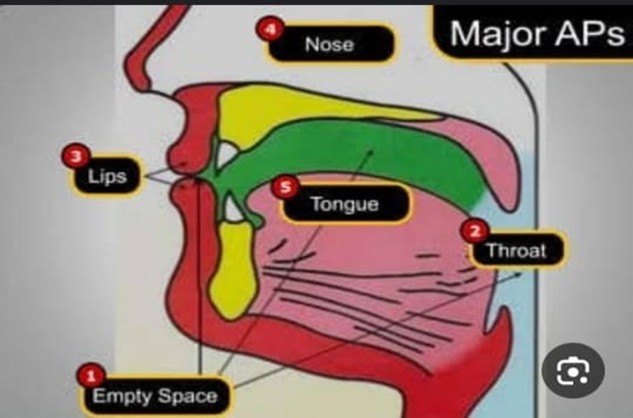
How to facilitate Quran recitation using Tajweed
- Are Properties and Articulation Points Important as much as Tajweed Rule?


Do you know the difference between these two pictures?
The first one is clear, while the second is blurry. Why? It is because we drew an outline for the tree in the first picture, which serves as a frame waiting for colors to finish and perfect the image. In the picture where the tree has no outline, the features are missing; it appears blurry. When reciting the Quran, you must outline your reading by strictly observing the articulation points and the properties of the Arabic letters. Then, you will perfect your reading by diligently following the rules of Tajweed!
- What is the importance of studying Tajweed in reciting the Qur’an?
Why is the study of Tajweed extremely significant?
The answer lies in the fact that by mastering the three aspects of Tajweed -its rulings, articulation points, and the characteristics of each letter- you will powerfully and automatically master pronunciation. Your recitation will be perfect and free from the two extremes: exaggeration and deficiency.
The Prophet Muhammad (peace be upon him) said: “The one who recites the Quran skillfully will be with the noble, righteous scribes [i.e., angels], and the one who recites it with difficulty, stammering, or stumbling through its verses will have a double reward” (Reported by Bukhari and Muslim). (1) This hadith highlights the great honor and lofty status achieved by perfect reciters of the Holy Quran. They will be summoned alongside the righteous. Additionally, this hadith encourages those struggling with recitation to persevere, as Allah, Exalted, commands us to recite the Quran clearly and properly when He says, “Recite the Quran (in a distinct) recitation” (Al-Muzzamil 73:4). (2)
This means not to recite it hurriedly but thoroughly, reflecting upon its meanings.
Imam Ash-Shatibi stated: “All reciters of the Quran hold firmly to it, honoring and respecting it in all conditions. Enjoy well all that comes your way in the Garden of Paradise! Your parents will be adorned with garments of pure light, crowns of honor, and other adornments. Now, what do you think of the children of those parents when they are rewarded? They are the family of Allah and the high-ranking elite.” (3)
“The Companions and the rulings on Tajweed”
- why did the companions –may Allah be pleased with them– not study the Tajweed rules in all their aspects before or in parallel with receiving the Quran from the Prophet (PBUH)?
This question has been widely debated, with several answers.
First, Allah (SWT) sent Jibril with the Quran to Prophet Muhammad (PBUH), including the Tajweed rules. The Prophet recited the Quran to his companions as it had been revealed, along with the Tajweed rules. His companions then recited it to their followers according to what they had heard from the Prophet. Similarly, their followers received the recitation of the Quran with the same Tajweed rules, continuing this transmission through generations until it reached us.
Secondly, the entry of foreign influences, which affected the Arab dialect in reciting the Holy Qur’an.
considering the application of Tajweed, with its three aspects -the rules, articulation points of Arabic letters, and their characteristics- as necessary stems from foreign influence. The Arabs used to recite all their speech with Tajweed. When foreign influences entered the language, people needed to establish rules for Tajweed to prevent the distortion of the Quran. They began to describe how the Arabs pronounced their words. The Prophet (PBUH) taught them, allowing them to recite with Tajweed naturally. The Arabs didn’t pronounce a single letter without Tajweed; even in poetry and ordinary speech, everything was articulated with it. This wasn’t merely a refinement or additional touch; it was the inherent nature of the Arabic language!
- “The role of Tajweed in preserving the meaning of the Qur’an”

As you can see in this picture, there are five major articulation points (Makharij), and certain letters are produced from each point. If any letter is produced from the wrong point, it can cause misunderstandings.
The word )makharij( is the plural of )makhraj( meaning an exit point or articulation point from which a sound is produced. For example, the letter Thaa (ث) is pronounced when the tip of the tongue touches the edge of the two top front teeth, while the letter Seen (س) is produced when the tip of the tongue touches the lower incisors along with the upper incisors.
Let me give you an example of how mispronouncing letters from different )makhraj( can lead to a sin. Some people pronounce (ث) as (س) due to their language or dialect; however, you mustn’t recite the Quran like this, as it changes the meaning. For instance, the word (فكثركم) means ‘So He increased you in number.’ If you pronounce (ث) as (س) and say (فكسركم), it changes the meaning to ‘So He broke you’
That’s why, you should pay attention to pronounce the letters correctly from it’s articulation point.
On the other hand, the two letters ‘b’ and ‘p’ come from the same articulation point. Both are bilabial consonants pronounced by bringing the two lips together. Let’s consider a conversation between a taxi driver and a passenger. The taxi driver asks, ‘Excuse me, can I bark here?’ The passenger, confused, responds, ‘Sure, you can bark anywhere. Why do you ask?‘ Once they realize the driver meant to ask if he could park—not bark like a dog—they laughed at the mix-up. Even though /b/ and /p/ share the same articulation point, attention to the characteristics of each letter is crucial. When you pronounce /p/, there is a puff of air, which does not occur with /b/.
Similarly, each Arabic letter has its own characteristics and features that distinguish it; thus, any confusion between them can change the meaning completely. For example, Allah -the Almighty- opens the chapter of “At-Teen” by swearing by it, saying, ‘By the fig.’ The word ‘fig’ in Arabic is (تين). If some people mispronounce the first letter sound At-Taa (ت) as At-Taa (ط), they lose the correct characteristics of the letter. Consequently, the meaning changes from At-Teen ‘the fig’ to At-Tin ‘the mud,’ which distorts the message of Allah.
Due to the relationships among Arabic letters, there arose a significant need to study these effects and analyze the relationships between them. Thus began the science of Tajweed. Scholars established specific rules governing the relationships between letters to ensure the recitation of the Quran remained faithful to the pure Arabic tongue. Those who learn the Quran must also learn these rules of Tajweed. For instance:
- When reading a Noon Sakin or Tanween before a throat letter,(ء، ه، ع، ح، غ، خ) ,one must apply the rule of Idhar.
- A reader of Tajweed should use Al-Madd (stretching of sound) correctly, Al-Madd comes with three letters (ا، و، ي). For example, when the alif (ا) is followed by hamza (ء) in the same word; it’s called the connected madd. While if it’s followed by hamza (ء) at the beginning of the next word; it’s called seperated madd.
- When a Noon Sakin is followed by “ي“ or “و,” the rule of Idgham applies with Ghonnah.
- Conclusion
Thanks to the dedicated efforts of these scholars, the recitation of the Quran has been safeguarded from the influences of foreign tongues among new followers of Islam.
To sum up, Tajweed is essential for reciting the Quran correctly, as the Prophet Muhammad (peace be upon him) did. It comprises rules for proper pronunciation, articulation, and pauses, ensuring accurate recitation without errors or distortions while avoiding unnecessary elongation. Mastering Tajweed brings one closer to Allah by following the divine guidance in reading the Quran as it was revealed.
- Sources:
1• Noble Quran/ (Al-Muzzammil )
2• Sunnah.com (Sahih al-Bukhari 4937)
3• Hirz al-Amani wa-Wajh al-Tahani (Lrg) منظومة حرز الأماني ووجه التهاني في القراءات السبع
4• Arabic 101( YouTube channel)
